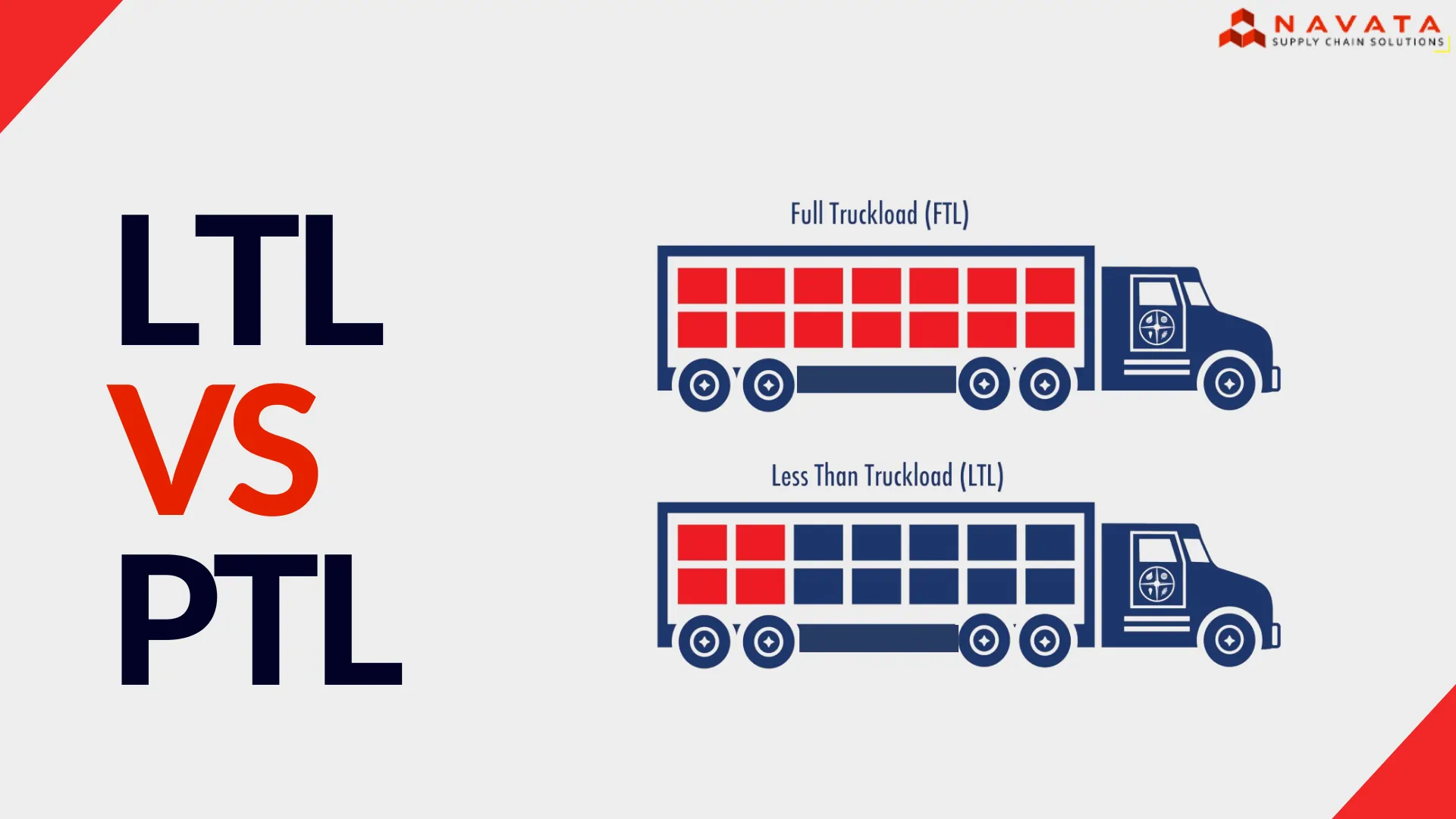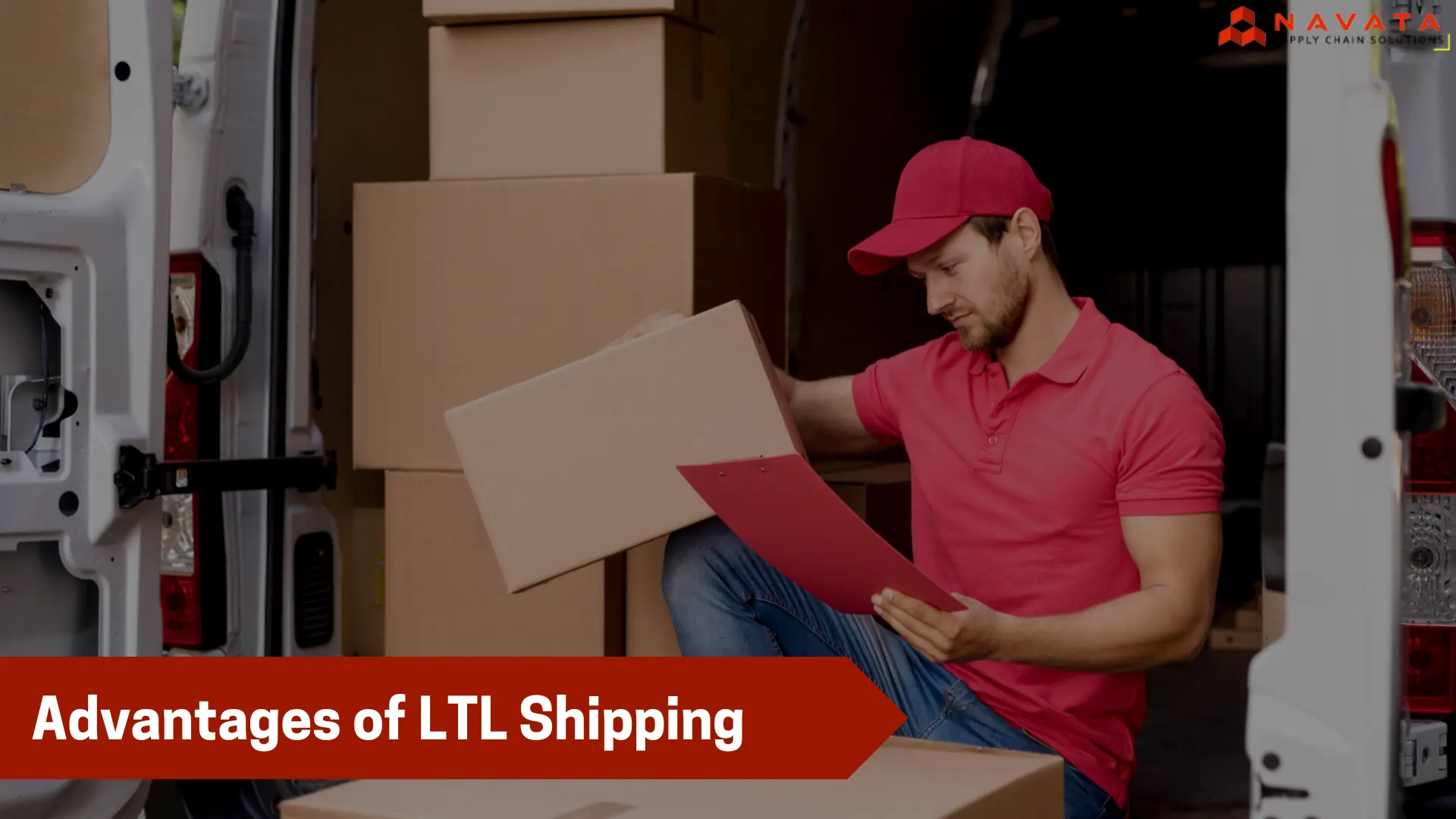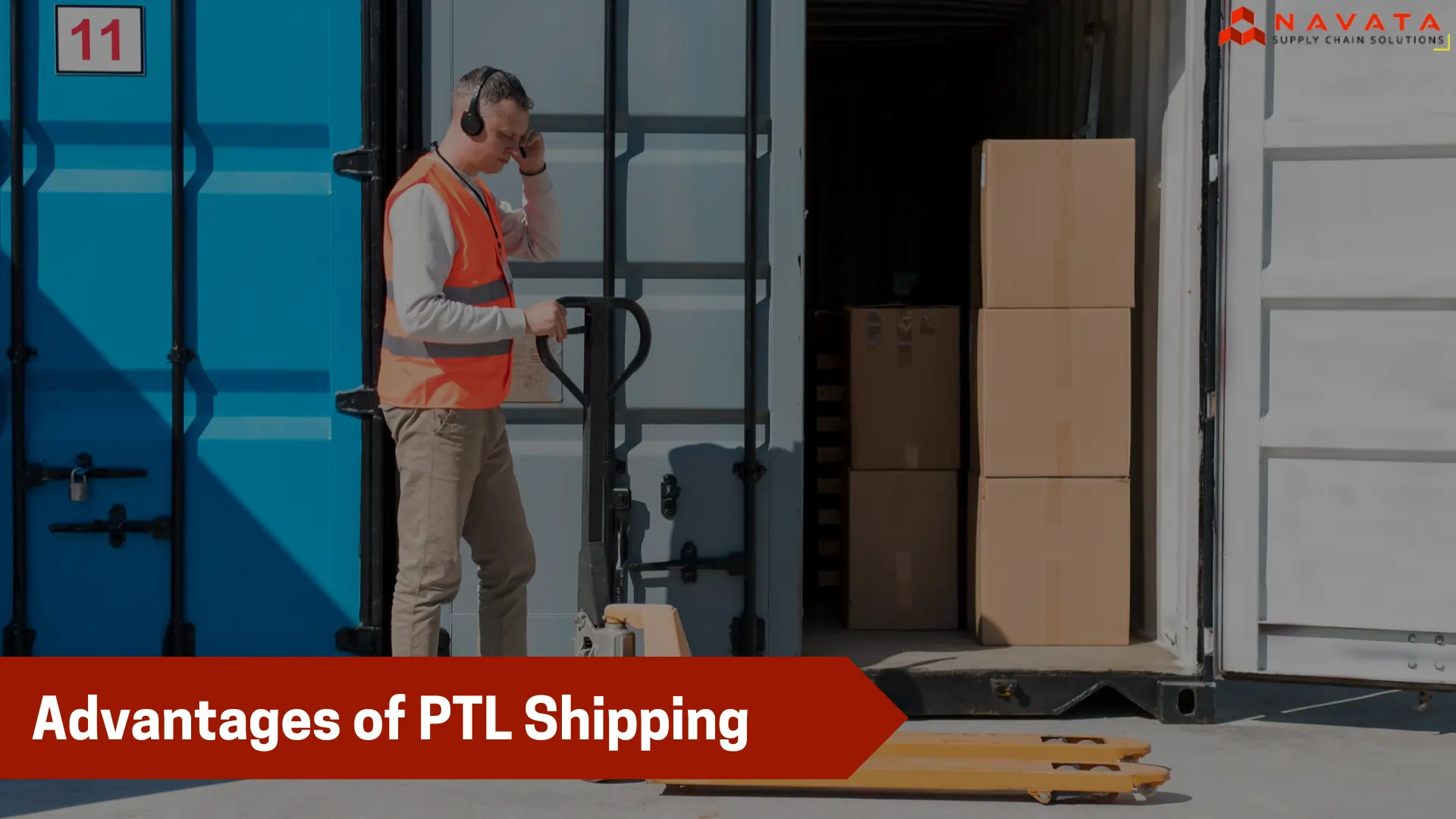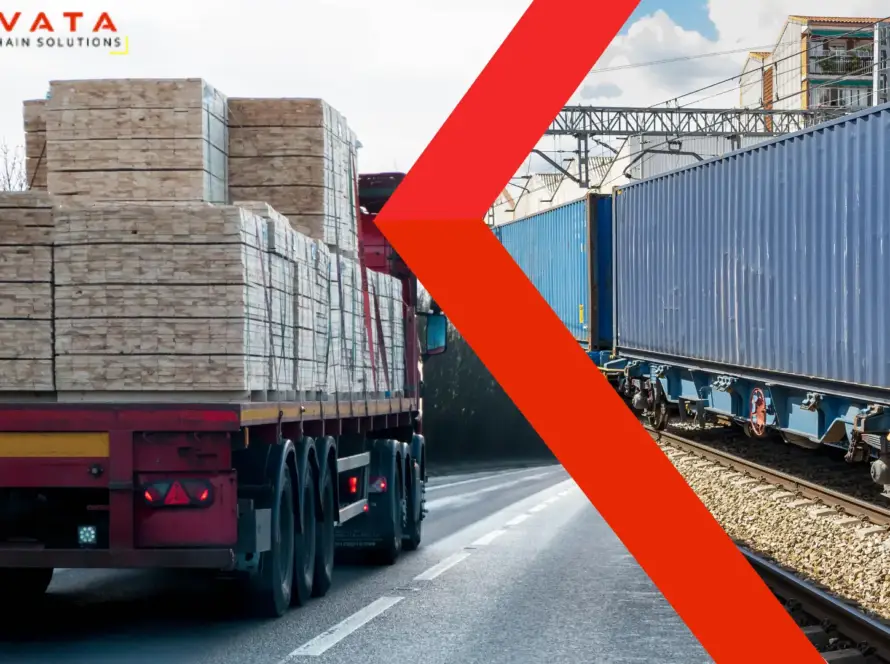What is LTL and PTL Shipping?
What Is LTL Shipping?
LTL shipping refers to the transportation of relatively modest freight without the need of a full vehicle. LTL carriers bundle multiple smaller shipments from different customers into a single truck rather than using an entire truck for a single consignment. Each cargo is processed differently, and the cost is determined by the shipment’s weight, size, and distance.
Features of LTL Shipping:
Cost-effective for small shipments: Businesses with less freight than a full truck may save money by employing LTL.
Consolidation: To maximize space, multiple clients’ shipments are integrated into a single vehicle.
Freight class: LTL shipments are classed based on the cargo type being carried, density, value, and other factors.
What Is PTL Shipping
Partial truckload is a shipping option that falls somewhere between LTL and full truckload. It is also known as shared truckload or STL. A partial truckload consists of multiple shippers sharing space in the same vehicle with appropriate freight. In contrast to LTL, which aggregates shipments from several clients, partial truckload focuses on making the best use of available capacity for a smaller number of larger shipments.
Features of PTL Shipping:
Space Efficiency: By merging shipments from multiple shippers into a single truck, a partial truckload maximizes available space. Shared truck space is provided to shippers with appropriate freight.
Reduced Handling: Partial truckload, when compared to LTL, can result in quicker transit times and a lesser risk of freight damage due to fewer stops and handling sites.
Volume-Based Pricing: Rather than focusing just on a shipment’s weight, partial truckload pricing typically considers the amount of space the item occupies within the truck.

LTL VS PTL
Shipment Size
The key distinction between LTL and PTL is the cargo size. LTL is often used for smaller shipments that do not require the full cargo capacity of a truck. These are frequently integrated with other shipments in a single vehicle to improve efficiency.
In contrast, partial truckload shipments, as the name implies, are larger consignments that take up a major percentage of a truck’s cargo space, often more than half. These shipments are too large for LTL yet do not require a full truckload, so PTL is the most appropriate alternative.
Manufacture Routines
There are major differences in the handling of shipments between LTL and PTL. Because of their nature, LTL shipments necessitate several handling steps. There’s more chance of damage or delay as they go from one freight terminal to another, mixed up with other shipments. However, PTL shipments are in this case advantageous.
Partial truckload shipments usually travel a more direct path since there is less handling required. This lowers the possibility of damage and guarantees that the shipment’s integrity is preserved. Furthermore, PTL shipments profit from lower freight costs and more effective resource utilization due to fewer touchpoints.
Transit Times
The efficiency of partial truckload transportation in terms of transit times is one of its main advantages. PTL shipments frequently offer speedier deliveries because they avoid the numerous freight terminals that come with LTL shipping. Transport time can be further reduced by optimizing PTL shipments for direct routes.
One important benefit of using partial truckload shipping services is that they are good for longer travel times. In contrast to LTL, which requires numerous stops at different freight terminals, PTL prioritizes productivity. PTL shipments guarantee quicker delivery times while also lowering the possibility of any damages from frequent loading and unloading by avoiding these extra terminals. This value is further enhanced by the option to optimize PTL shipments for direct routes, which guarantees that items arrive at their destination as soon as feasible.
Shipment Safety
There is an inherent risk of harm whenever cargo is handled, loaded, or unloaded. The possibility of items being damaged much lowers with PTL than with LTL since PTL requires less handling. As a fundamental component of the PTL technique, this handling reduction guarantees that your shipment will travel safely and undamaged. This lower risk is a significant advantage for companies shipping expensive or delicate goods.
Cost Difference
It is important to take into account all of the possibilities when evaluating the financial elements of shipping. Even while PTL may cost more than LTL, it’s frequently less expensive than FTL, particularly if you don’t have enough cargo to load a full truck. This is particularly true for companies who send a lot, but not quite enough to warrant renting a whole truck. Businesses may strike a balance between efficiency and cost by using PTL, ensuring they don’t overpay for unused truck space.
Efficient Freight Management: LTL & PTL Services Made Simple
When Is LTL Better Than PTL?
For goods that fit onto pallets with other cargo items and are substantially smaller, LTL shipping may be a more economical choice. Furthermore, LTL can be a better option if your package has a flexible delivery schedule and can handle delays caused by several stops at freight carriers.
Although PTL has many benefits, there are some circumstances in which LTL may prove to be the better option.
When shipments are significantly smaller and fit neatly onto pallets with other merchandise without taking up a significant amount of the truck’s space, LTL shipping becomes very appealing. LTL shipping becomes an attractive and affordable choice when a shipper is operating on a tight budget and the product fits on a typical pallet.
Furthermore, this shipping option may better suit the shipper’s objectives if the delivery schedule is flexible and the consignment can withstand any delays caused by the numerous stops and interactions with various freight carriers that are inherent to LTL. It all comes down to comprehending the particular needs of the goods and matching it with the most appropriate transportation option.

Advantages of LTL Shipping
There’s Plenty of Less-Than-Truckload Capacity Available
The transportation industry is massive. However, not every company has full-truckload volumes of freight to transfer, which is well-understood by many carriers. As a result, customers in need of less-than-truckload solutions will usually find plenty of options. As a result, shippers with LTL freight to move will have no issue doing so on a regular basis in accordance with their schedule.
LTL Shipping Is Cheaper Than PTL Shipping.
Less-than-truckload freight , allowing for multiple shipments to be loaded onto one trailer. Moving your goods with LTL will become more cost-effective as more parties chip in, subsidizing the expense of paying for that driver’s time. Of course, this will be determined by the class and overall size of your goods. And, as the quantity of trailer space your freight takes up increases, so will your fee, in spite of that, LTL shipping is less expensive than PTL.
Environmentally Friendly
In the trucking and transportation sectors, reducing carbon emissions and climate change are serious challenges. LTL is a great green choice if you’re attempting to run your organization with more consideration. Fuel and vehicle requirements for shipments are decreased when using the LTL shipping technique. In addition, it helps carriers find the most efficient routes for moving their cargo, which saves both time and gasoline.
You Might Also Like To Read: Understanding 3PL 4PL & 5PL

Advantages of PTL Shipping
Whereas LTL services distribute trailer capacity among five or more organizations, PTL transportation is more exclusive, making it a fantastic alternative when the shoe fits.
PTL Shipments Require Minimal Handling
Partial truckload shipment, which handles freight less regularly, can help you avoid many of these concerns. Because PTL freight is not transported from one trailer to the next, as long as carriers use their trailer space wisely, once your product is secured, it will not move until it arrives. As a result, expect to see fewer cargo claims for damaged freight while transporting PTL.
PTL Shipping Is Faster Than LTL Shipping
One of the primary disadvantages of less-than-truckload shipment is the extended transit durations that can accompany it. Shippers who send LTL freight frequently struggle to fulfill tight deadlines unless they use expedited services. Although PTL shipping still has transit timing issues when compared to dedicated carriers, the difference is less significant.
With PTL, your truck will need to make many pickups and deliveries, which can make anticipating arrival dates difficult; however, your cargo will never have to change trailers once it is in place, and considerably fewer shippers will share it.
Discounts And Deals In PTL Shipping
Trucking businesses that perform Partial-load shipping frequently provide additional savings and perks. This is because it allows them to persuade more enterprises to switch to PTL. As a result, they do not need to impede their vehicles and can keep them rolling. PTL pricing is fair and thus frequently the favored alternative by SMEs who don’t have their own fleet and/or have fewer goods to ship.
Conclusion
Depending on the size, cost, and delivery needs of your goods, LTL (Less Than Truckload) and PTL (Partial Truckload) shipping provide unique benefits.
Because LTL shipping combines several shipments into a single vehicle, it is ideal for small shipments and helps firms save money. With prices determined on weight, size, and distance, it is reasonably priced. It does, however, require extra handling, which raises the possibility of delays or damage.
However, PTL shipping works well for bigger goods that don’t need a whole vehicle. It minimizes handling, increases space efficiency, and frequently offers quicker transportation times. Even though it could be more expensive than LTL, it’s still less expensive than FTL (Full Truckload) and comes with unique offers and discounts, particularly for small and medium-sized businesses.
In the end, a number of variables, including shipment size, handling preferences, transit timeframes, and financial constraints, will determine whether to choose LTL or PTL. Each approach has benefits, and choosing the best one will maximize your shipping plan and boost productivity.
Thanks For Reading: LTL VS PTL: Difference Between Less Than Truckload and Partial Truckload
Powered By 360Presence
FAQ
Difference between LTL and PTL in terms of shipment size?
LTL is used for smaller shipments that don’t need a full truck, while PTL handles larger consignments that take up a significant portion of the truck’s space but not enough to require a full truckload.
How does PTL shipping reduce handling?
PTL shipments involve fewer handling stages and stops than LTL shipments, resulting in shorter transit times and a lower chance of freight damage.
When is LTL shipping a better option than PTL?
LTL is better for smaller shipments that fit onto pallets with other cargo and have flexible delivery schedules, making it more economical.
How do LTL and PTL services manage efficient freight?
Both LTL and PTL services offer efficient freight management by optimizing space usage, reducing handling, and providing cost-effective solutions for different shipment sizes and needs.
What is cost difference between LTL and PTL?
While PTL may cost more than LTL, it is often cheaper than a full truckload (FTL), especially for businesses that don’t have enough cargo to fill an entire truck.

